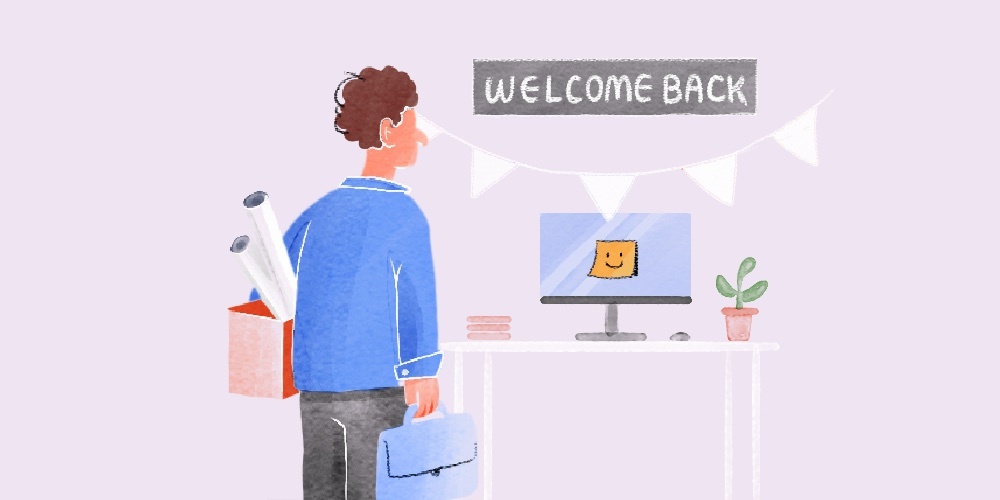In-office probationary periods for new hybrid hires are stretching too long

When Aldrin Villahermosa II received his job offer earlier this fall, there was one major caveat. He had to be in the office five days a week during his probationary period, even though the rest of the staff operated on a hybrid schedule.
His probationary period, a set amount of time that employers use to assess whether a new hire is a good fit for the position, lasts 90 days. During this time, new hires usually receive extensive training and support from their supervisor, weekly check-ins with the supervisor to receive feedback, support for improving performance to meet expectations and later on a formal decision on whether they are a good fit for the position.
At first, Villahermosa II was OK with this requirement in his new role – health department referral and resource coordinator at Voices of Tomorrow, a non-profit that provides social services to immigrants and refugees from East African communities. He understood that going in as a new hire would help him as he onboards. And it did.
“Initially I found the 90-day probation period a hindrance to my life because I now had to commute in Seattle-bound traffic every morning, but as I spent more time in my role I realized how crucial this in-person period is for a few reasons,” said Villahermosa II.
He was exposed to different individuals outside of his department, seeing new faces every day, quickly becoming acquainted with his own team members, learning about the organization’s culture, and becoming familiar with the ins and outs of his role. The free lunches helped too.
But after about three weeks, that sentiment started to shift.
Before this job, he was only filling up his gas tank every two weeks. Now, with his daily commute of 45 to 60 minutes each way, he’s at the gas station every four days. He’s not able to go to his doctor appointments during the week, or really have much flexibility at all. Those little things do have an impact.
“When I first started my job search, I was very staunch about having a fully remote or a primarily hybrid schedule where I would be able to have a flexible work-life balance to make work manageable while also being able to live my life the way I want to,” said Villahermosa II. “I was a little turned off because I wanted something that I could go straight into being remote or hybrid.”
It’s not necessarily out of the ordinary for a new hire to not have all of the same benefits as everyone else. For example, some companies don’t offer PTO until someone is out of their probationary period. In other cases, it’s not having a 401K match until then. But being required to be in the office during those three months is a new one, and like most current workplace trends, stems from how the fallout from the coronavirus pandemic changed the way we work.
Experts have reported time and time again that onboarding is the hardest part to do for a remote or hybrid workforce. Part of the struggle with remote onboarding is teaching new hires where they fit into the organization, how to use their computer systems and meet co-workers across functions. But the most difficult aspect is figuring out how to remotely share an employer’s ethos.
That’s why employers are pushing for new hires to come into the office. But instead of having them only come in when their manager is there or a couple days a week like the rest of the employees, they’re being required to come in five days a week.
Villahermosa II does think the pros overall outweigh the cons. If he could change one thing, though, it would be the amount of time the probationary period lasts: 45 or 60 days would get the job done just fine. “I feel as if I understand my role well and I have a consistent workload that could easily be completed while working from home,” he said.
And Villahermosa II isn’t alone either. Julianne Merz, a fund development associate for Girl Scouts of Suffolk County, also had to be in the office five days a week the first three months of being hired.
If everyone else is hybrid and the new hire is full-time in the office, could that leave them in a situation where there isn’t even anyone there on their team to help guide them some days? Merz’s company thought ahead on that one. Her supervisor was required to also be in the office full-time during those three months that she was. That might be taxing on the supervisor too, who had to go from being hybrid to fully in-person again for three months. In worst case scenarios, it might even make a manager reluctant to hire. And this solution didn’t make things perfect for Merz either.
“Since we work with multiple departments who were not required to work fully in person, I found that I was reaching out to most of them virtually anyway,” said Merz. “And me and my supervisor Slack 85% of the time when we’re in the office anyway.”
And the three months Merz found to be too long, but she does think there was some benefit to it. “I think six to eight weeks fully in person would’ve been sufficient,” she said.
Merz and Villahermosa II might think that three months was too long, but at some companies, that time frame is actually doubled. New hires at employee benefits, payroll services, HR support company Bene-Care, are required to be in the office full-time for the first six months.
“We’re very up front about it at hire and are super flexible if they need to occasionally work from home if they have an appointment to get to,” said Sophie Friedrich, payroll service manager at Bene-Care. “A lot of new hires said they actually preferred being in full time at the start because it’s helpful to have people right there in person to run to for help when they need it.”
At Bene-Care, the supervisors of the new hires aren’t mandated to also come in every day like at Merz’s company, but they often do find themselves choosing to come in more frequently. Friedrich says though that the office is always bustling and there are enough people there for the new hires to go to.
When it comes to the question of whether or not it’s fair new hires need to go in every day when others are hybrid, it’s hard to say. But when it comes to boosting productivity, the answer is a lot clearer.
“It’s different for every company, but it takes about a year to really feel comfortable in the position that I manage, which is why we do it,” said Friedrich. “During Covid, we had a lot of people home often during their first few months at the company and once we changed the policy, we had more success with new hires.”
She remembers when she first was hired in the early days of the pandemic and describes it as a struggle. “It was so nerve wracking to message or call people I didn’t know for help,” she said. “In our experience, being in person removes that barrier.”


